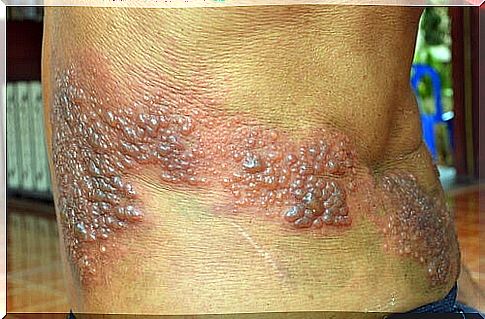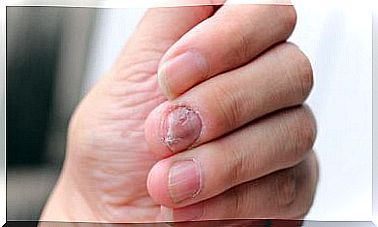Shingles, Causes And Symptoms Of The Disease
Herpes zoster is a disease that mainly affects people over 50 years of age or those who suffer from a weak immune system.

Shingles is an infection caused by the VZV or varicella zoster virus. This disease mainly affects the nerves that are located under the skin. Its main manifestation is inflammation and the appearance of rashes in the form of blisters. These are located along the infected nerve, so they can be seen easily.
The affected skin is irritated, it has small blisters that follow the line of the nerve. This provision makes the disease popularly known as “shingles”.
In most cases, this disease affects adults. However, a large portion of adolescents have episodes of herpes zoster, but these are mild. It is in the elderly that this infection causes great difficulties.
Causes of the disease

The virus that causes shingles is the same as chickenpox. The virus is never eradicated from the body, it remains there in a dormant state. When certain health conditions come together, the virus reactivates in the nerve ganglia.
Not all people who have had chickenpox develop shingles. The virus usually reactivates in people with temporary or permanent changes in the immune system. Due to their age, illness or the administration of certain medications such as corticosteroids, rheumatism medications and other illnesses.
The people most likely to develop this disease are adults over the age of 50. People with weakened immune systems (HIV) are also prone to it. In addition, it has been observed that those who suffered from chickenpox before the first year of life can also develop this herpes.
Symptoms of shingles
Usually, pain is one of the more obvious symptoms that can appear even before the blisters are visible. This is because the virus affects the nerves in the dermis. In most cases, the blisters appear between 1 and 14 days after the first sensation, and the pain can be both mild or severe.
The first symptoms of herpes zoster are:
- Itches
- Tingling
- Focal pain
In addition, during the initial stage of herpes zoster, the following symptoms may also appear:
- Fever
- Headache or general malaise
But without any hesitation, the main symptom of shingles is the presence of blisters. At first the rashes are small, but they can grow and join others, forming large blisters. Normally, their growth period varies from 3 to 5 days. Finally the scabs form, and this corresponds to the final phase of the episode.
In the event that the virus reappears in the head area, it can even affect sight or hearing. And if it gets lodged in the mandibular nerve, it causes lesions in the oral cavity, in the tongue and in the throat. So much so that on rare occasions it can lead to loss of sense of taste.
Diagnosis and complications

The diagnosis of shingles is made from the physical examination of the patient. We take into account, of course, his antecedents and his clinical history.
If there is no certainty that this could be a case of shingles, a sample of the tissue where the lesions are located is sent for examination to a laboratory to evaluate the case meticulously. A blood test is also a reliable method for making a definitive diagnosis.
However, it is only when the nervous system is compromised that a lumbar puncture is used to diagnose the condition. In addition, in atypical cases, the “Tzank test” is used, which consists of culturing the fluid that makes up the blisters.
One of the most common and serious complications of the disease is “postherpetic neuralgia”. It appears in 50% of patients and consists of pain similar to an unbearable burn. In the most complicated cases, the pain can completely paralyze the individual. The worst thing is that it can last for weeks, months, years or even a lifetime.
Other complications can be vision problems, when shingles occurs near the eye. The effects sometimes get very serious. It can also cause additional skin infections, such as cellulitis or impetigo. In some cases, this type of herpes can cause meningitis.









